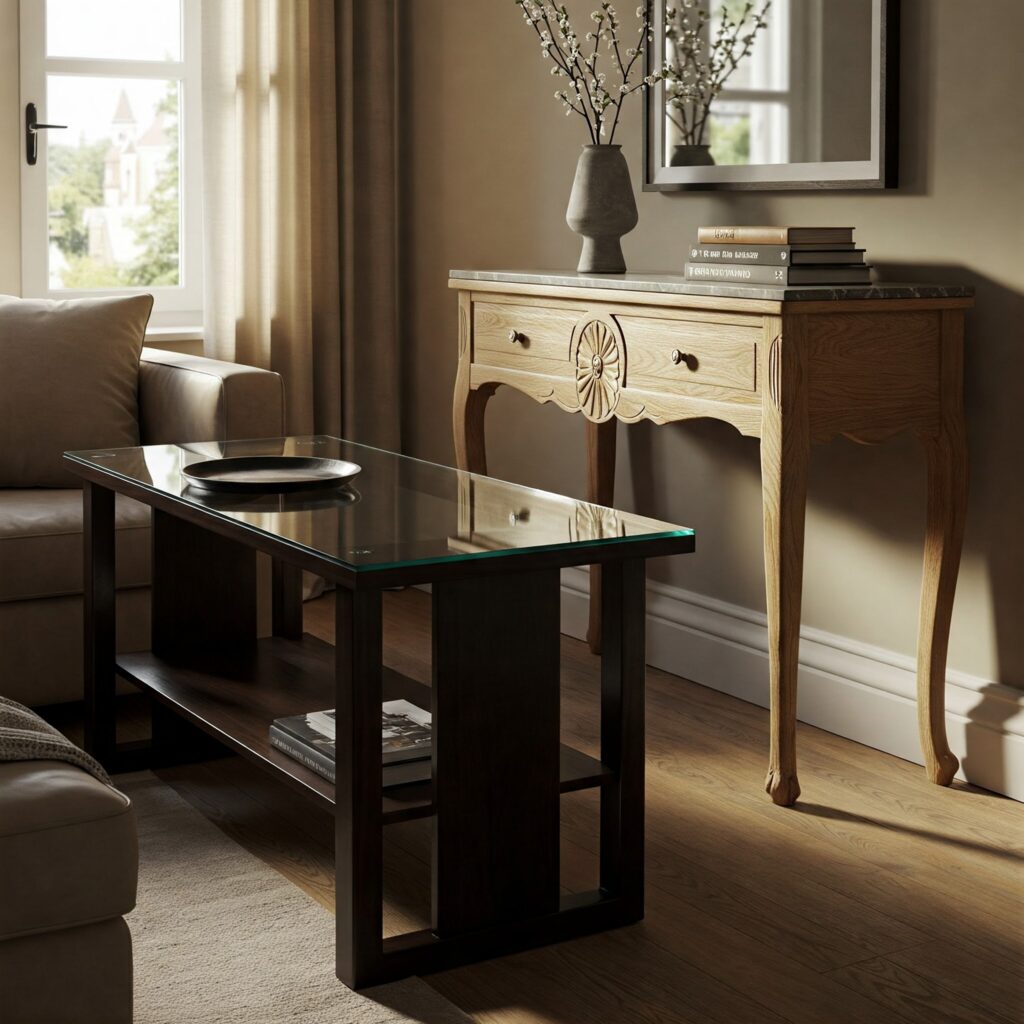
When furnishing your home, the sheer variety of tables available can be overwhelming. Two pieces that often cause confusion are the console table and the sofa table. While both are typically long and narrow, their intended purpose, placement, and design nuances set them apart.
Understanding these key differences will not only help you choose the right piece for your space but also elevate your interior design. This comprehensive guide will delve deep into the distinctions between console tables and sofa tables, covering everything from their primary function to their typical dimensions and styling.
Let’s unlock the secrets to differentiating these versatile furniture pieces.
What is Console Table ?

A console table is a long, narrow table that is typically placed against a wall. It is often used as an accent piece in entryways, hallways, living rooms, or even dining rooms.
Console tables are designed to be both visually appealing and functional, offering a surface for displaying decorative items like lamps, vases, artwork, and often providing storage through drawers or shelves.
What is Sofa Table ?
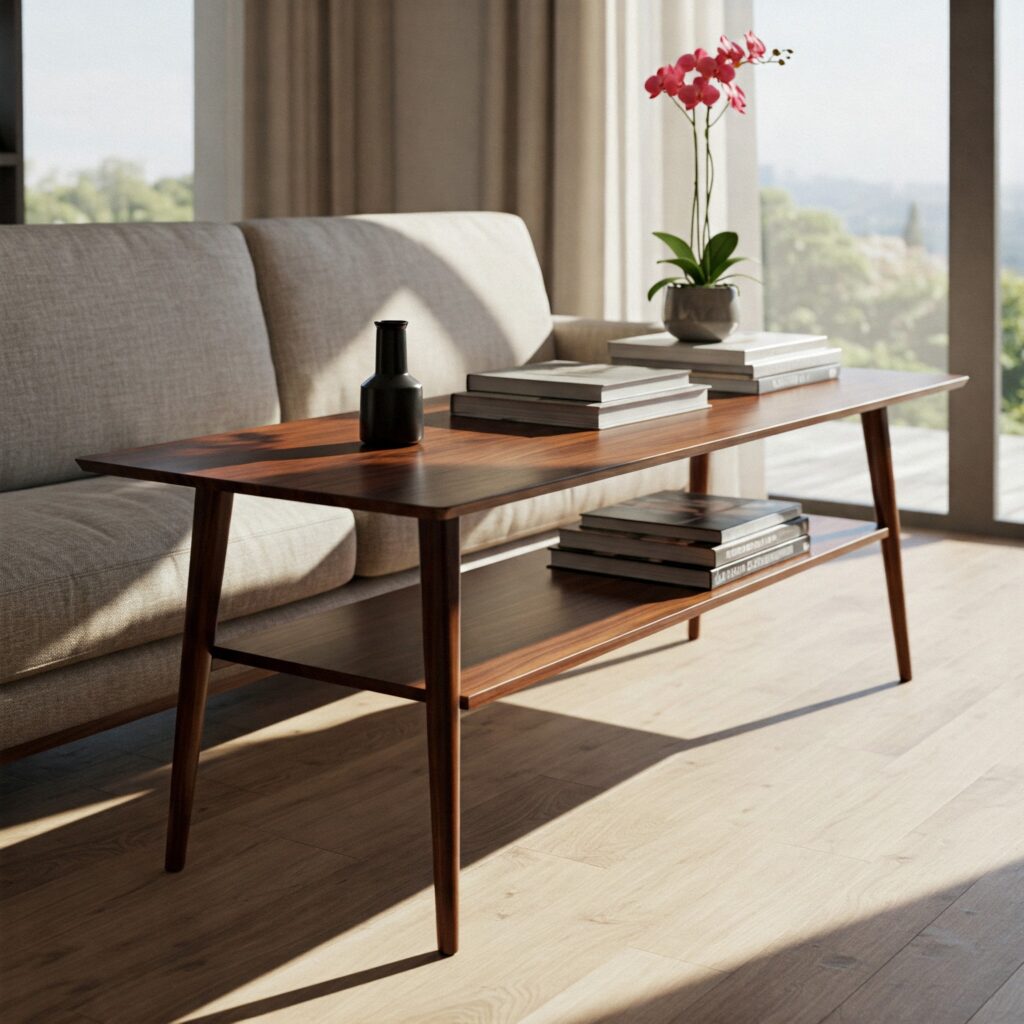
A sofa table specifically made to go behind a sofa. It’s usually about the same height as the back of your couch.
This makes it a super convenient spot to put essential items without having to reach all the way to a coffee table. It can also help make your sofa look more grounded in a room.
4 Major Difference between a console and a sofa table
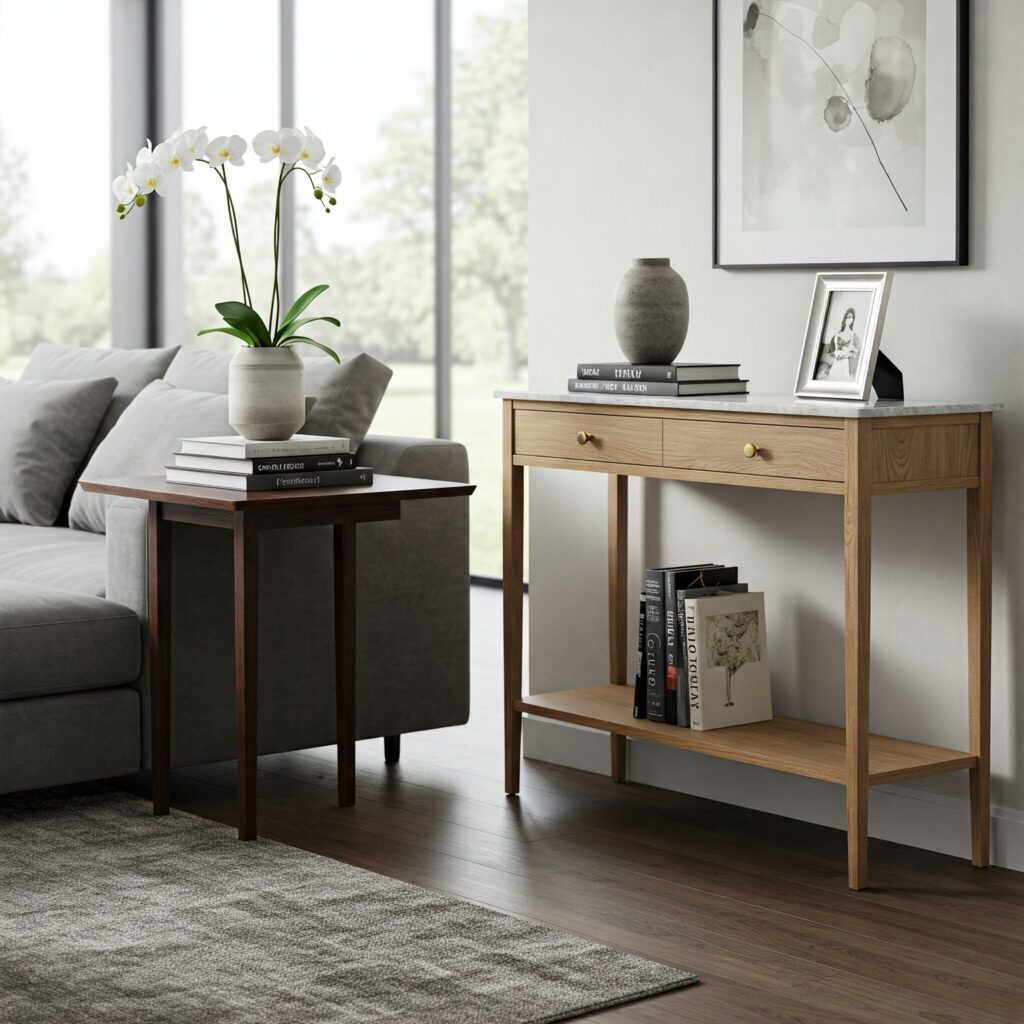
1. Location, Location, Location
The intended placement of each table directly influences its design and functionality
Console Table
Console tables are known for their versatility in placement. You’ll frequently encounter them in entryways, serving as a welcoming spot to place keys, mail, and decorative items.
They also enhance hallways, adding visual appeal and providing a surface for displaying artwork or plants.
In living rooms, console tables often find their place against a wall, frequently positioned beneath a mirror or artwork to create a focal point. Occasionally, you might even spot them in dining rooms, where they can function as a convenient serving station or an additional decorative element along a wall.
Sofa Tables
The placement of a sofa table is generally more specific. Their most common and intended location is behind a sofa, offering a convenient surface for various items.
While less typical, a long and narrow table could theoretically function similarly to a console table against a wall in some instances, though its dimensions might not always feel perfectly balanced in that setting.
2. Dimensions, Size and Shape Considerations
While both are generally long and narrow, subtle differences in dimensions often exist.
Console Table Dimensions
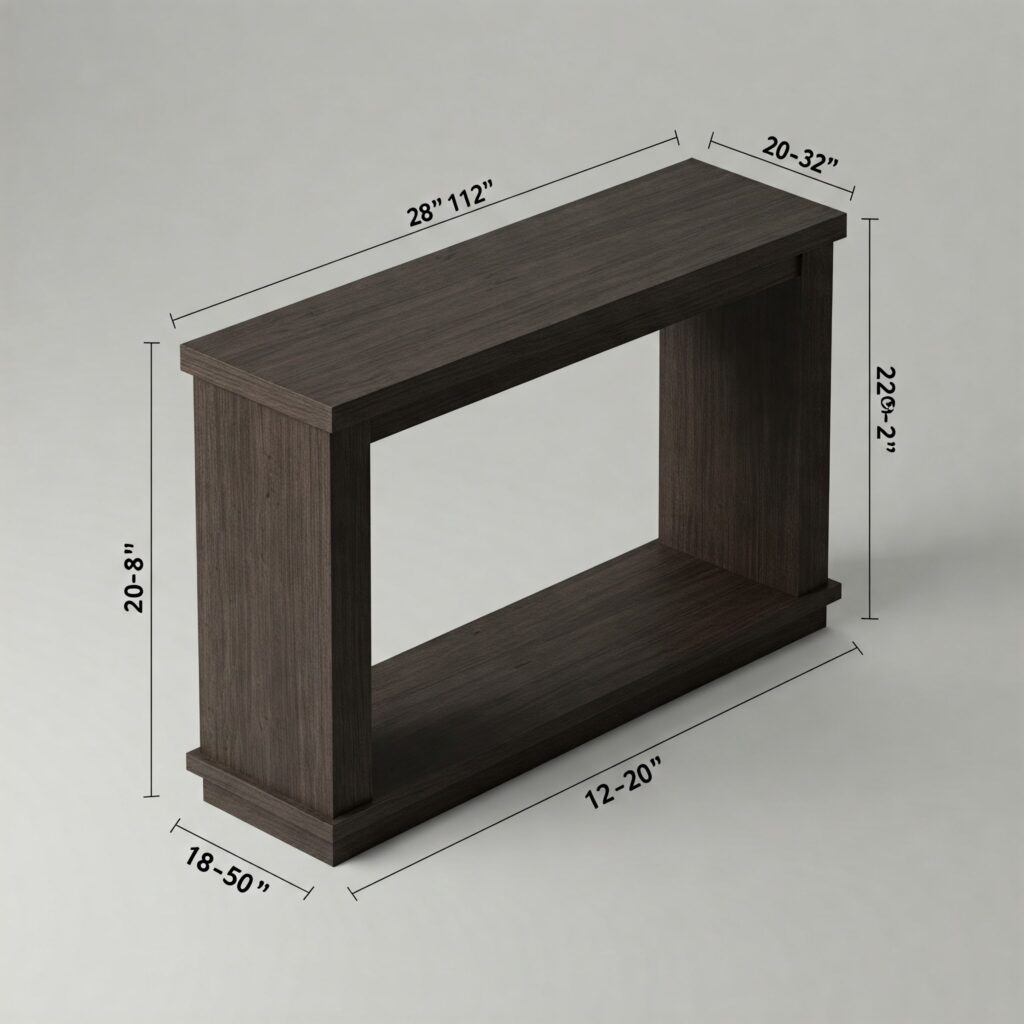
The height of a console table typically falls within the range of 28 to 32 inches, which is comparable to the height of a standard table or desk, making it a comfortable height for placing and picking up items.
The length of a console table can vary considerably based on the available space, spanning from 30 inches to well over 70 inches.
In terms of depth, console tables are generally shallower, usually ranging from 12 to 20 inches, a design that prevents them from protruding too far into a room when placed against a wall.
Sofa Table Dimensions
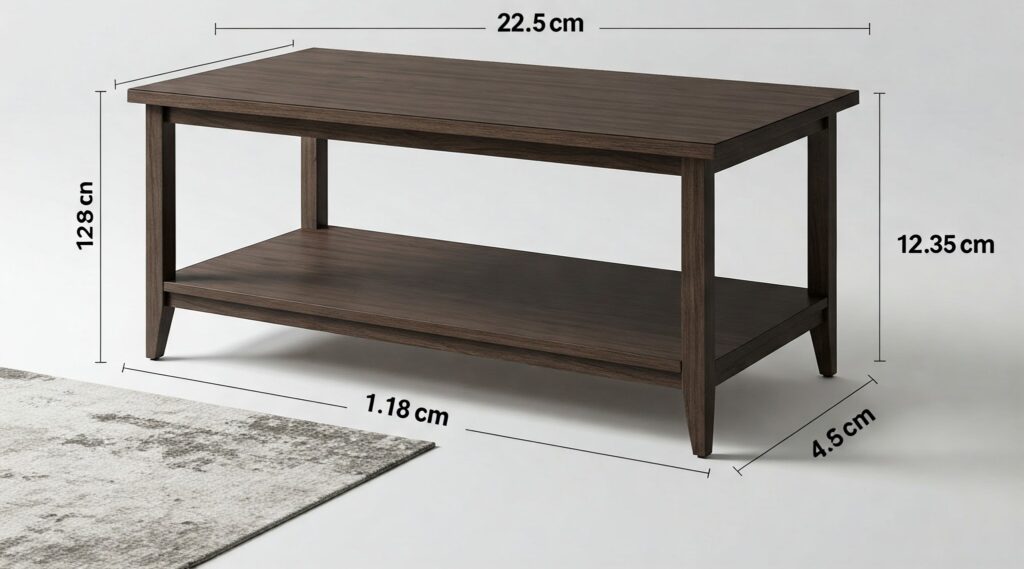
The height of a sofa table is usually designed to be close to the height of the back of a sofa, typically ranging from 24 to 30 inches, ensuring easy access to items placed on it while you’re seated.
The length of a sofa table should ideally be similar to or slightly shorter than the length of the sofa it sits behind, creating a balanced look.
Finally, the depth of a sofa table is often even shallower than that of a console table, typically ranging from 10 to 15 inches, a design choice to avoid taking up excessive space behind the sofa.
Related article : What should be the ideal size of console table?
3. Style and Design
While design trends evolve, there are general stylistic tendencies.
Console Table

Often designed to be a standalone statement piece. They can feature more intricate detailing, bolder designs, and a wider variety of materials, as they are meant to be visually prominent. You’ll find console tables in various styles, from ornate and traditional to sleek and modern.
Sofa Table
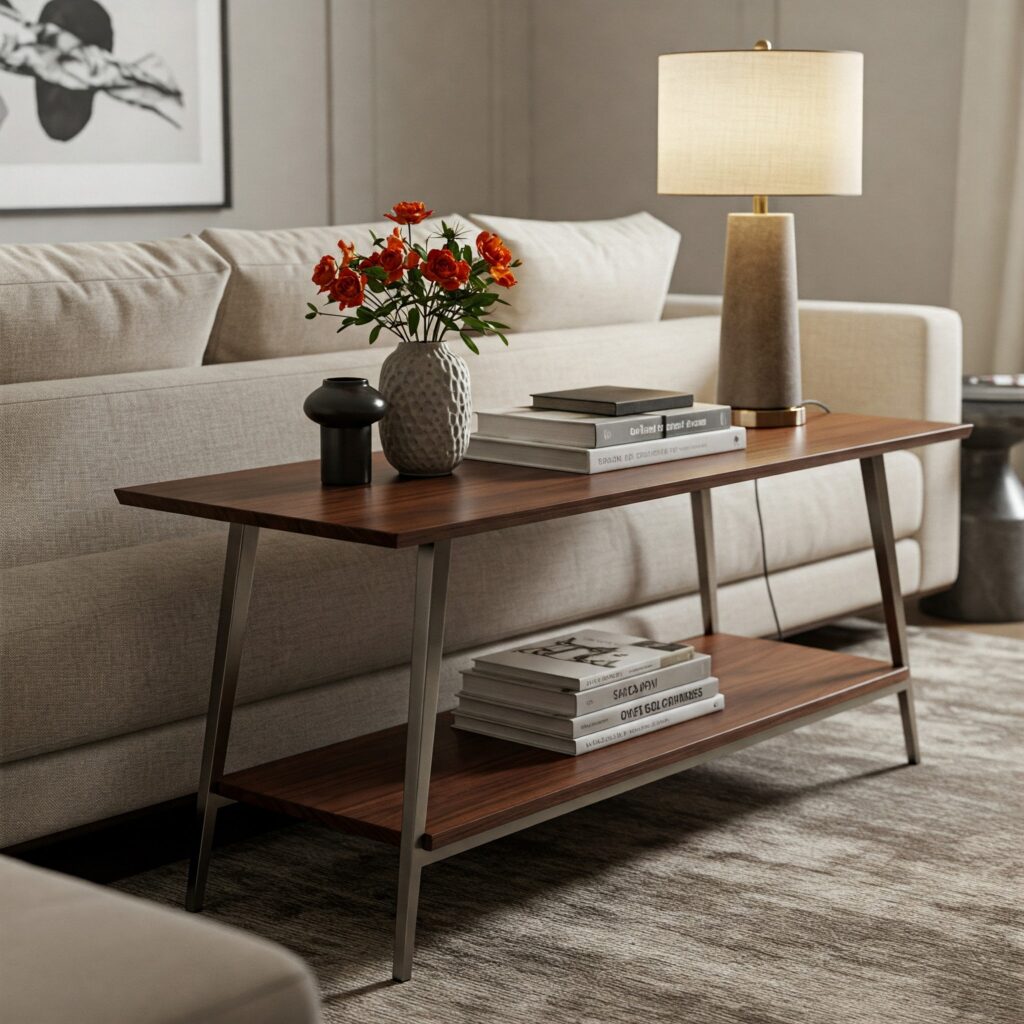
While aesthetics are still important, sofa tables often take a more understated approach. Their design is usually meant to complement the sofa rather than compete with it.
However, this doesn’t mean they lack in style. You can find sofa tables in various materials and designs, but they tend to be less visually dominant than many console tables.
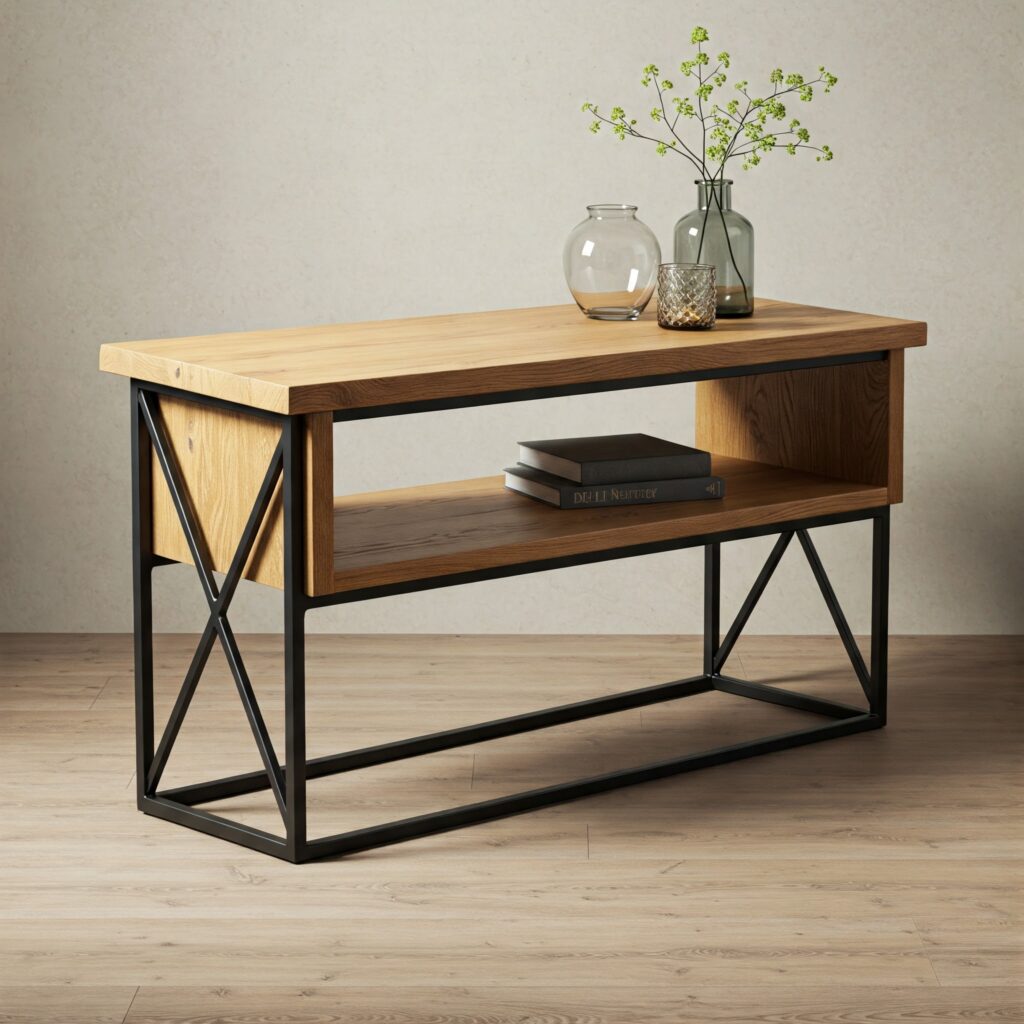
4. Storage Solutions
Both types of tables can offer storage, but the emphasis might differ.
Console Table
Frequently incorporates drawers and shelves to provide practical storage in entryways or living rooms. This allows for stashing away keys, mail, or decorative items.
Sofa Table
May have shelves for displaying books or baskets, but drawers are less common. The focus is often on providing a surface rather than concealed storage behind a sofa.
Comparison between Console and Sofa Table
To summarize the key differences, here’s a quick comparison table
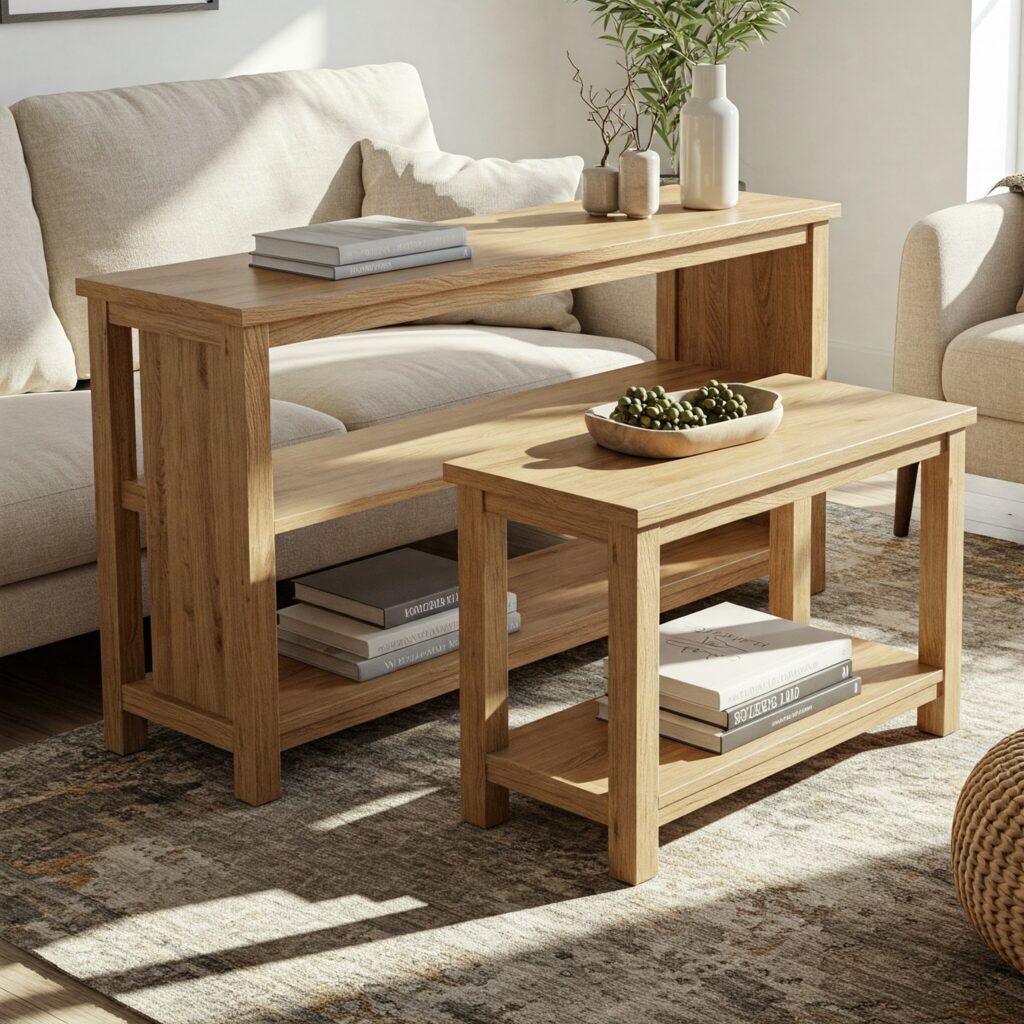
| Feature | Console Table | Sofa Table |
| Primary Function | Accent piece, landing spot, display surface | Convenient surface behind a sofa |
| Typical Placement | Against walls (entryway, hallway, living room) | Behind a sofa |
| Typical Height | 28-32 inches (standard table height) | 24-30 inches (similar to sofa back height) |
| Typical Depth | 12-20 inches (shallower) | 10-15 inches (even shallower) |
| Typical Length | 30+ inches (varies) | Similar to or slightly shorter than the sofa |
| Style Emphasis | Often a standalone statement piece | Designed to complement the sofa |
| Storage | Often includes drawers and shelves | More commonly features shelves |
Choosing the Right Table for Your Space
Ultimately, the best choice between a console table and a sofa table depends on your specific needs and the layout of your room.
Console Table
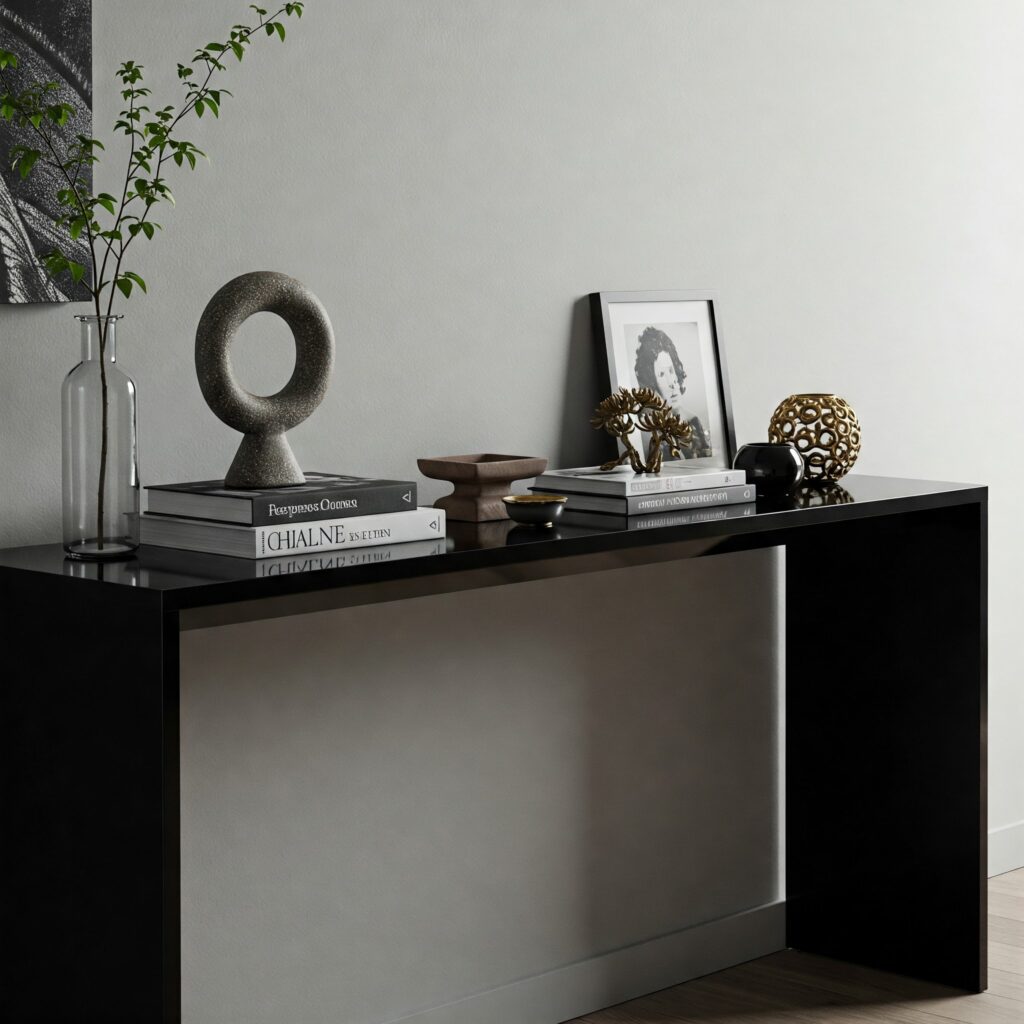
Consider choosing a console table if you are looking for a stylish accent piece to enhance your entryway, hallway, or the wall space in your living room. They are also ideal when you require a surface for displaying decorative items and potentially need some extra storage.
If the table is intended to stand alone and significantly contribute to the overall aesthetic of the room, a console table is likely the better choice.
Sofa Table
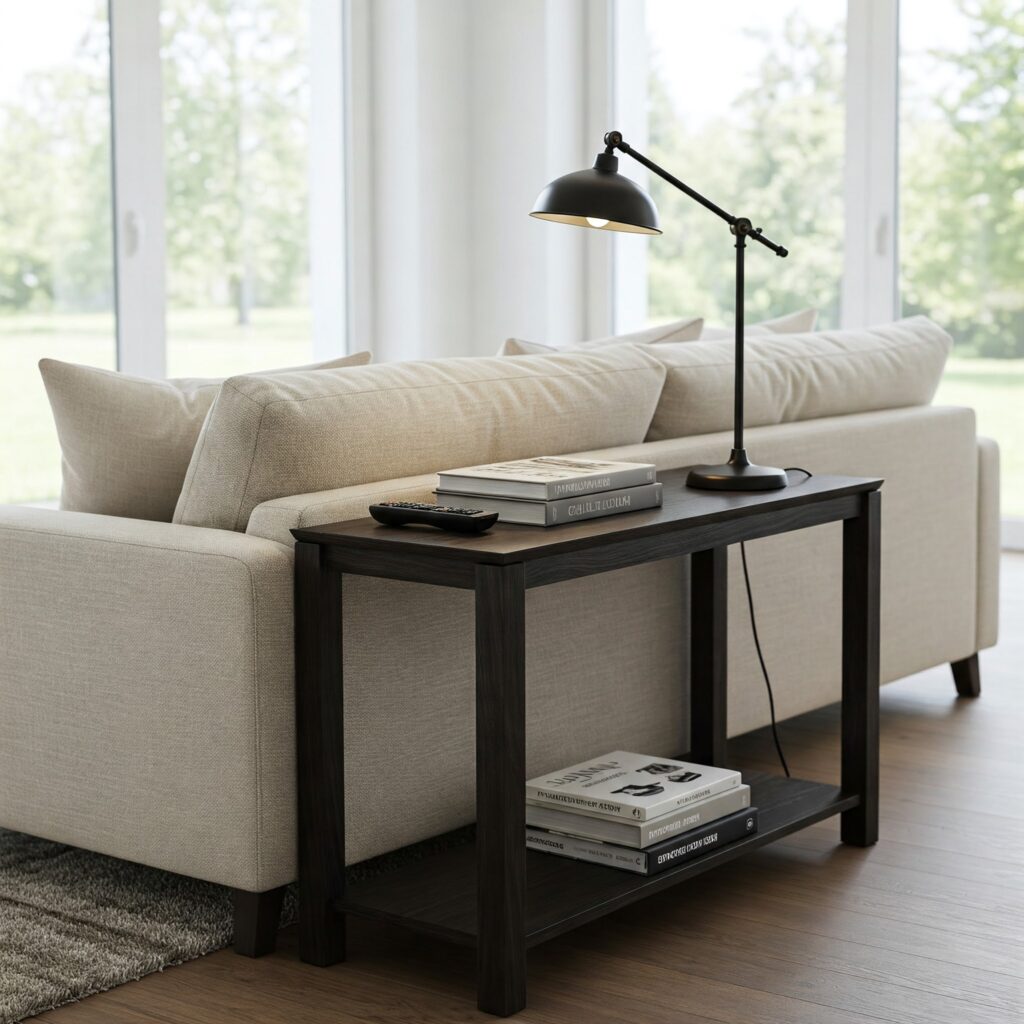
Opt for a sofa table when you want a convenient surface behind your sofa for easy access to lamps, drinks, and remotes.
They are also beneficial when you need to visually anchor your sofa in a larger living space, helping to define the seating area. If the primary function of the table is practicality behind your seating, a sofa table will likely be the more suitable option.
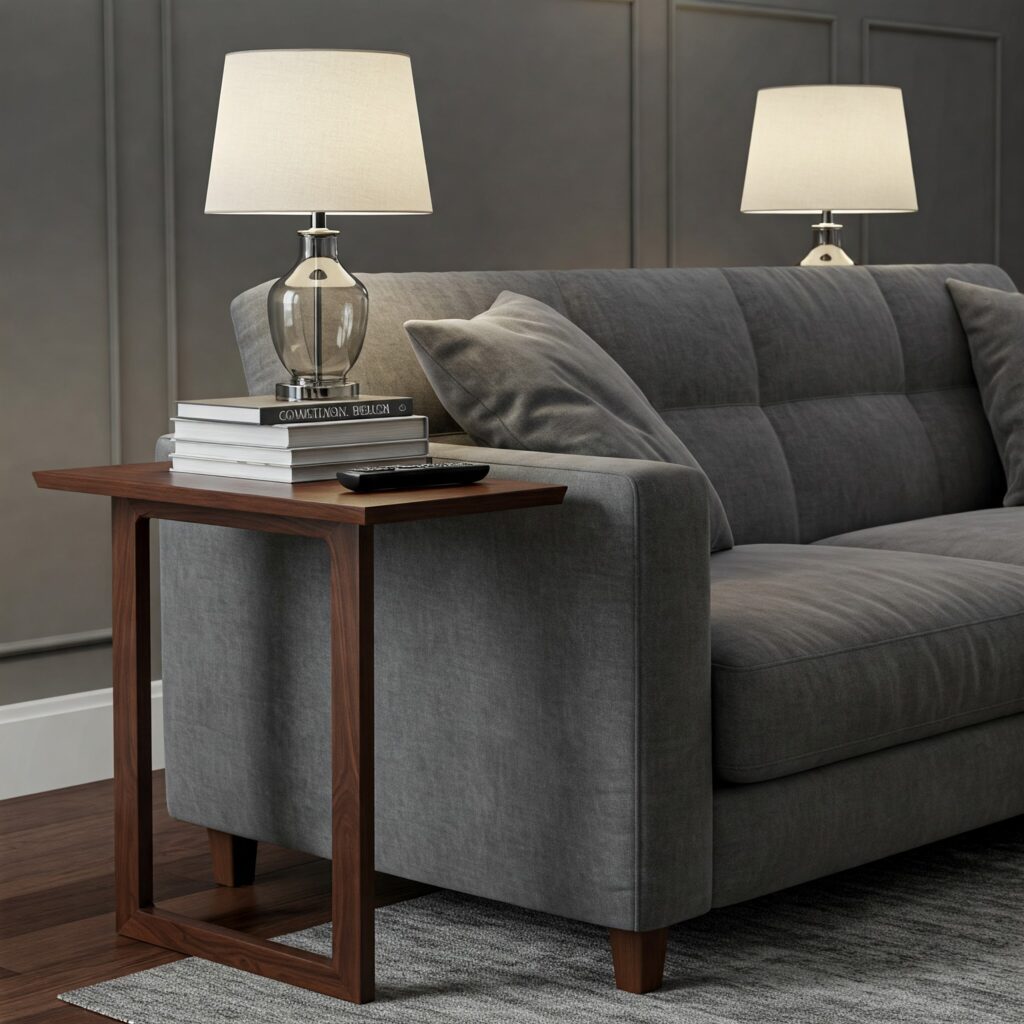
Final verdict
By understanding the distinct characteristics of console tables and sofa tables, you can confidently select the perfect piece to enhance the functionality and style of your home. Don’t be afraid to get creative, but always keep their core purpose and typical placement in mind for the best results.
